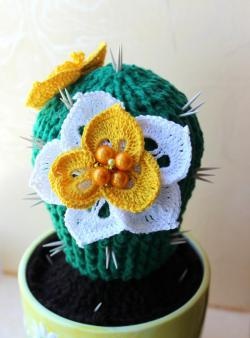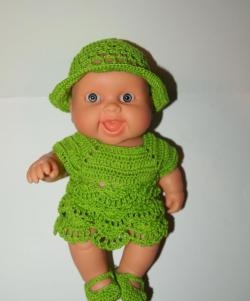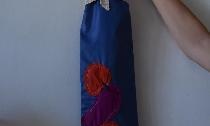Gloxinia crochet
Indoor plants occupy a special place in every home. They help you be closer to nature and are the second wind of any room. But what if your favorite flowers simply refuse to grow in your living conditions or require incredibly difficult care?
In fact, there is always a way out and its name is handicraft. It is no longer unusual for many to see artificial plants. Many families with children with allergies have discovered such a miracle as crocheted flowers in pots. And that's great! After all, such a plant can conquer even avid connoisseurs of wildlife!
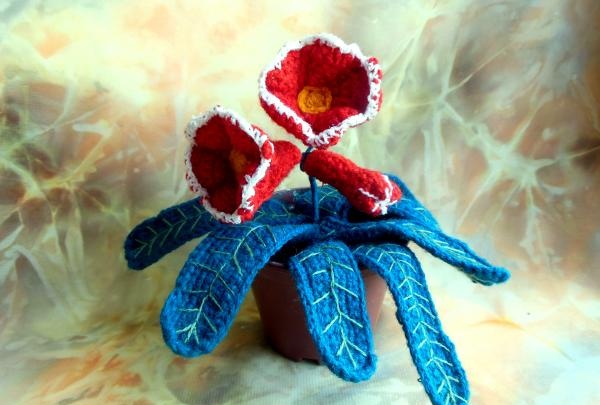
To create such a flower you will need not only yarn and a hook, but also 2-3 hours of your time, diligence, desire, as well as knowledge of the basic principles of crocheting.
Shall we get started? To knit indoor gloxinia, we will prepare red and green yarn, plus some white and yellow threads for finishing, and also a 2.0 mm hook.
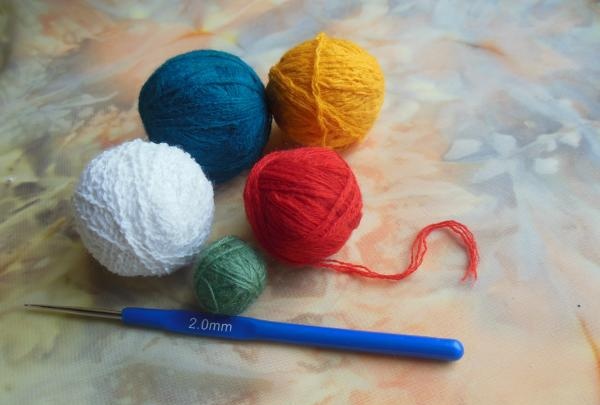
From the yarn intended for the flower (it can be not only red), we cast on 4 air loops (c) and knit 4 rows with a single crochet (dc).

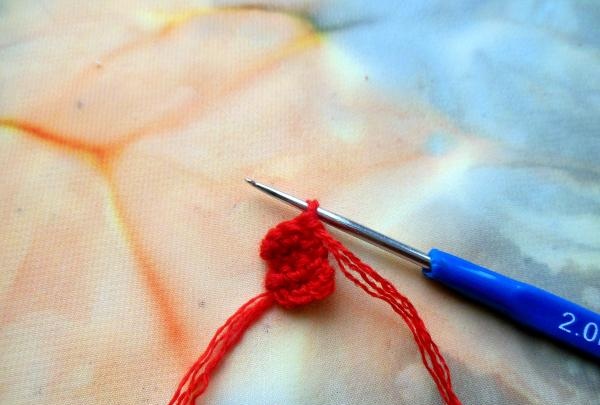
In the 5th row along the edges we knit 2 stitches from one loop and knit 2 more rows of double stitches. n.
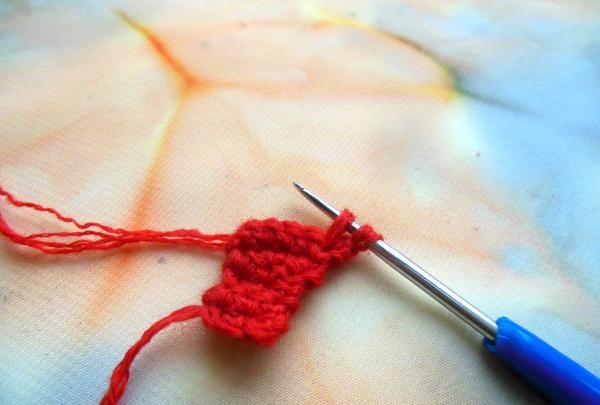
We knit the first 3 loops of the 8th row with 1 stitch, knit the next loop again without a crochet and complete the row with three stitches with 1 stitch.
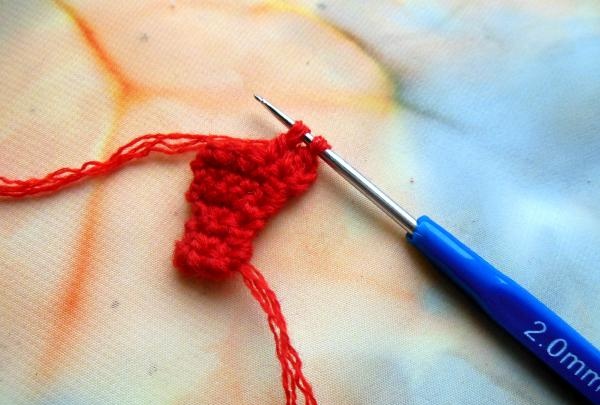
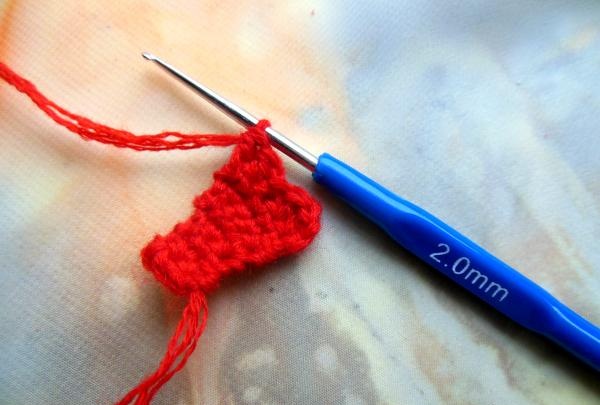
Then we align the finished petal by tying its outline with a connecting post.
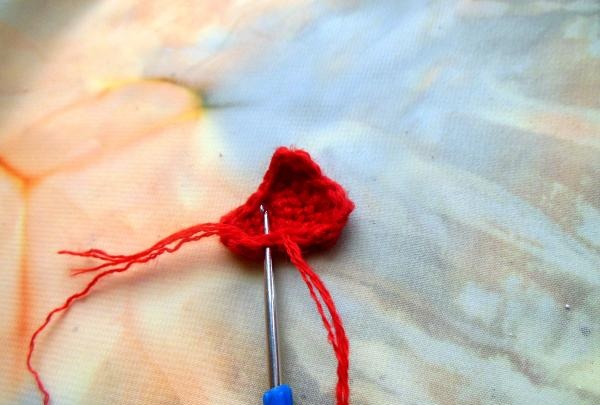
In total, you will need about 5-6 of these petals, which form the inflorescence we need.
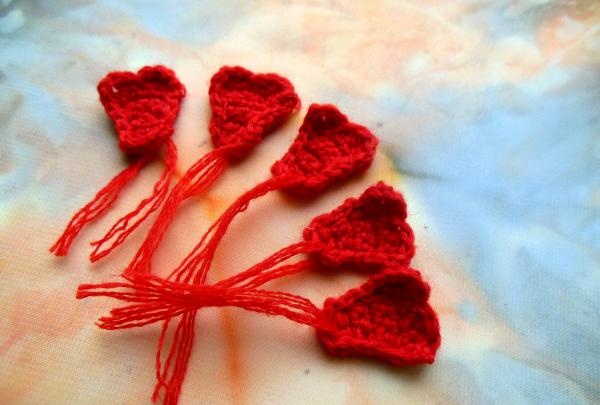
And the yellow center will hold these petals. It consists of two round parts, knitted in double stitch. n circular knitting.
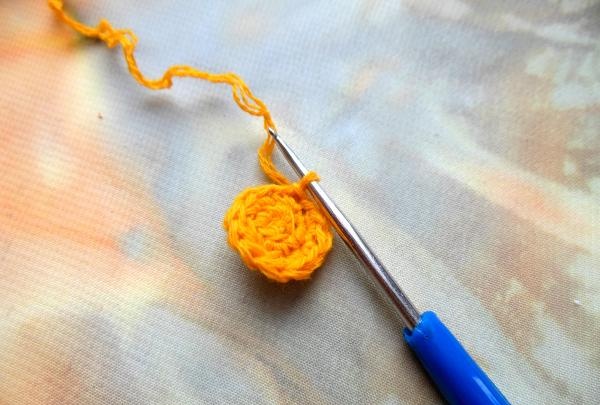
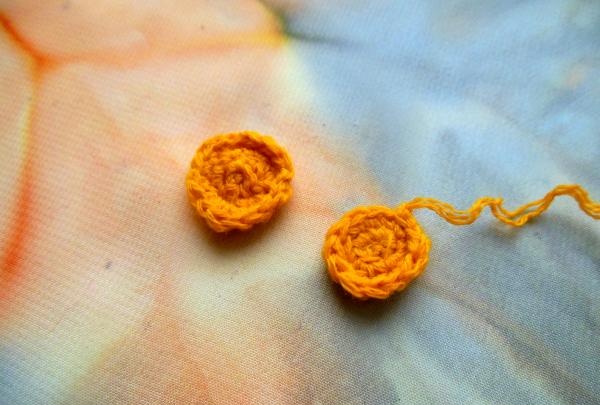
First, you need to sew the petals to one circle, and then strengthen them at the back with the same yellow blank.
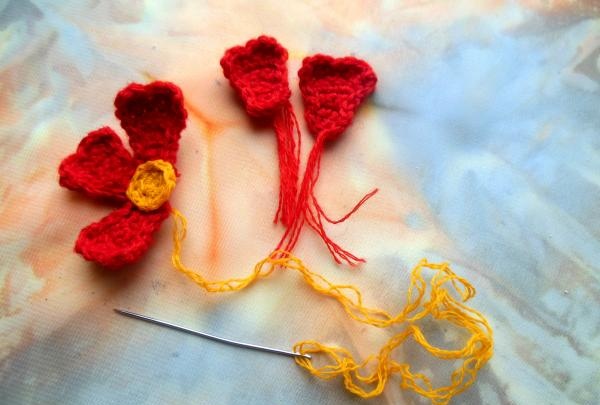
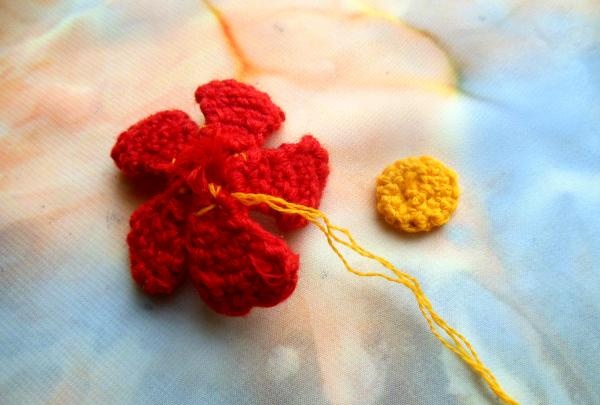
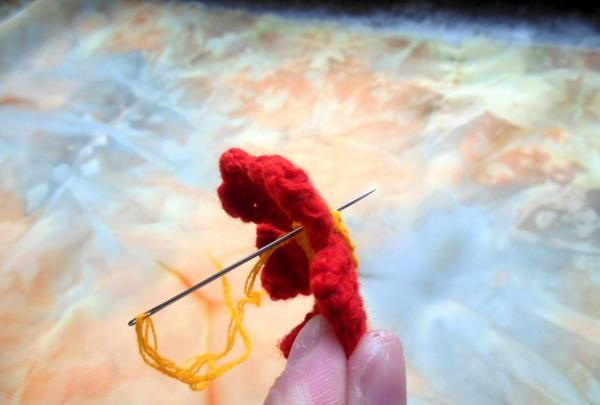
Next, tie the outline of the petals with white thread, collecting the flower together.
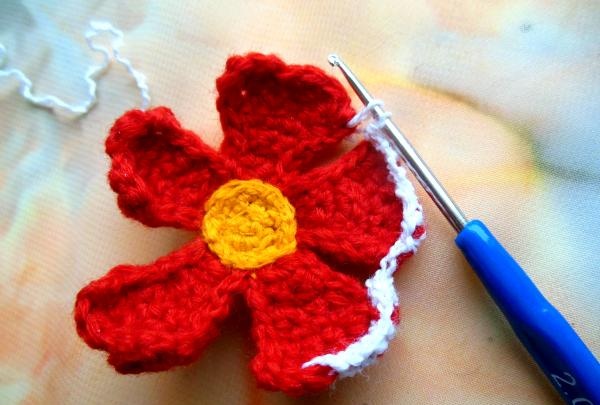
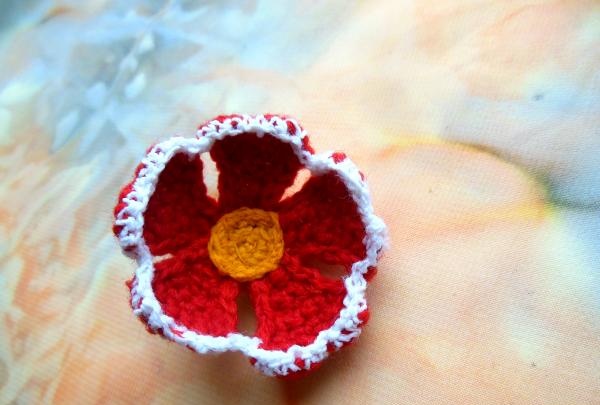
Now we carefully sew up the side cuts and proceed to lengthening the receptacle.
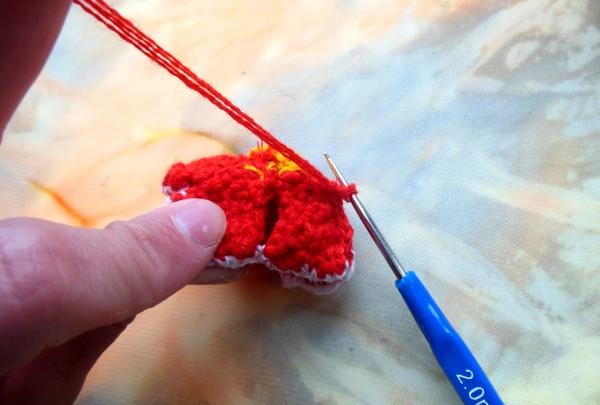
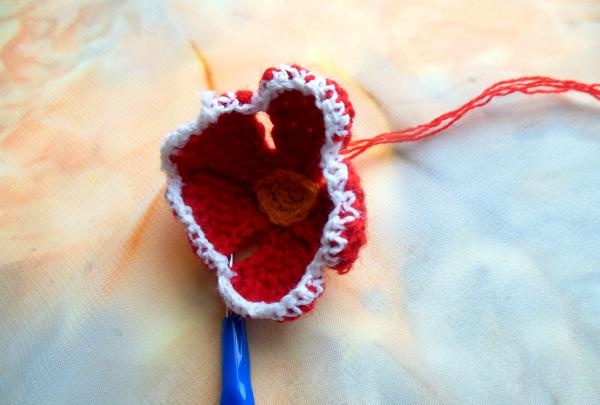
To do this, we tie the outer yellow “seal” of the base in a circle around the st./b. n, gradually reducing their number.
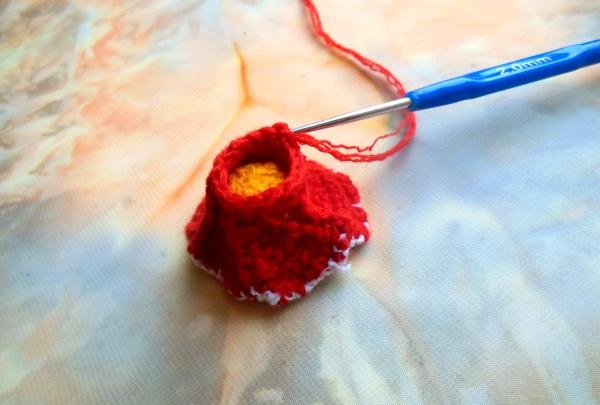
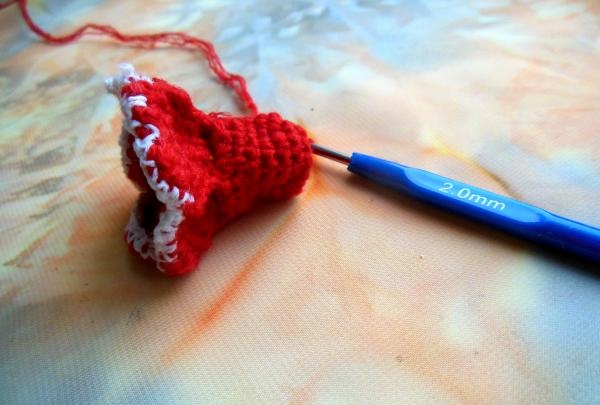
You will get a long tube, which needs to be finished abruptly (close all the columns - 6-7 pieces - with one loop).
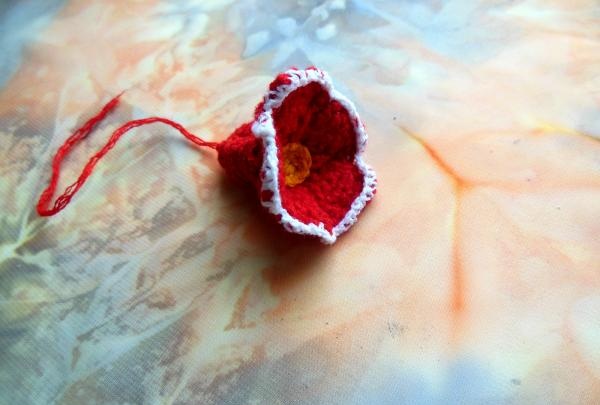
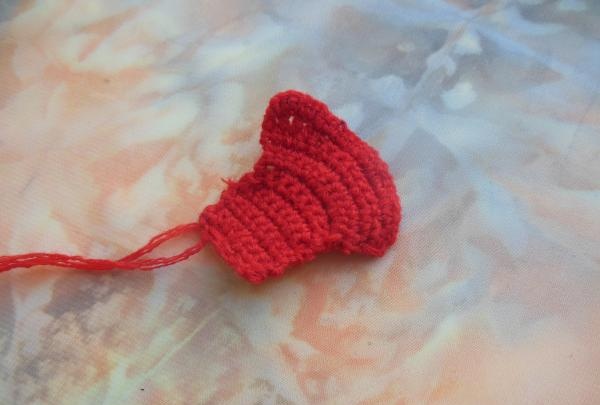
Creating a bud is even easier. You should cast on 8 loops, knit 9 rows of dc. n and in the next three rows constantly double the number of stitches (knit 2 from each loop).
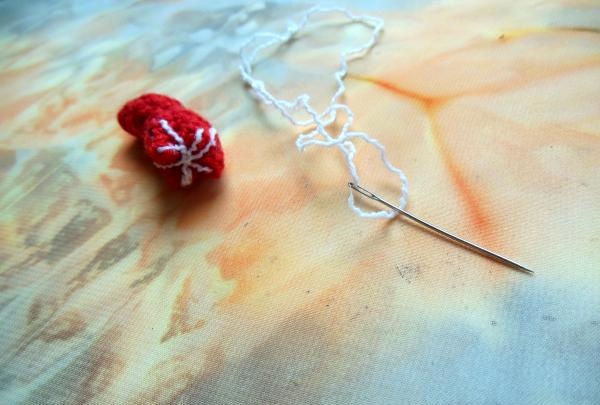
Then sew this blank along the cut and gather it on top, and then apply a white finish.
The leaves of Gloxinia are smooth and narrow (without relief elements or teeth along the edges), which makes knitting quite easy. We dial 30 v. p and tie this chain on all sides with st./b. n.
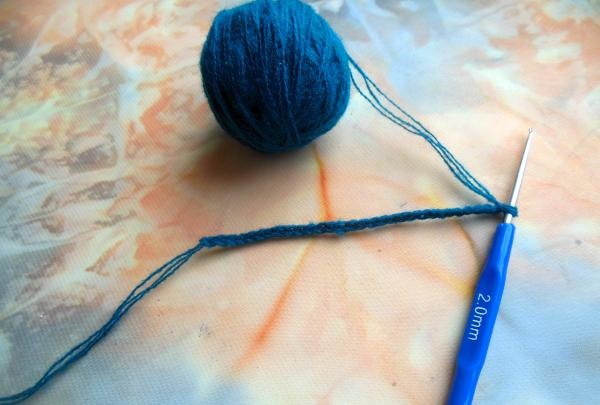
The sides of the leaf should increase greatly (3-4 increases for each loop) so that its shape does not resemble a saucer.

After the leaf has acquired the desired width (2-3 cm), apply light green veins to its surface using a needle and thread.
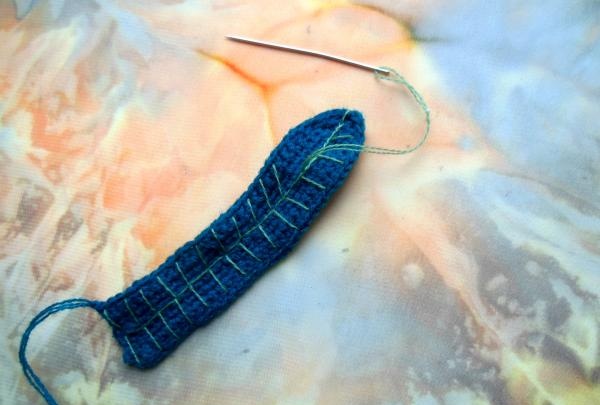
For a small plant, 7-8 leaves are enough. There is only one inflorescence, but it includes several flowers and at least one bud.
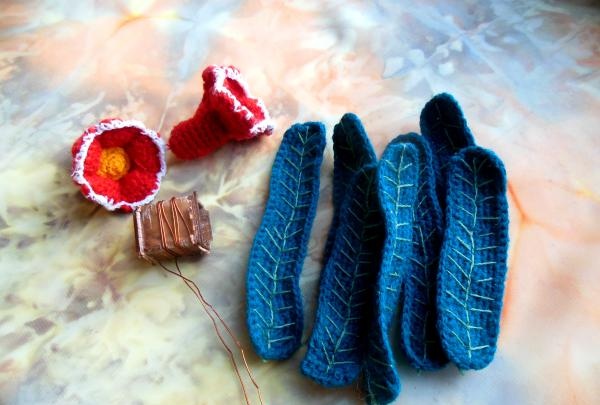
The best material for the peduncle will be copper wire (it is advisable to choose a thick one).
You just need to put a leaf on it and twist both ends into a tight stem, and then “green” it.
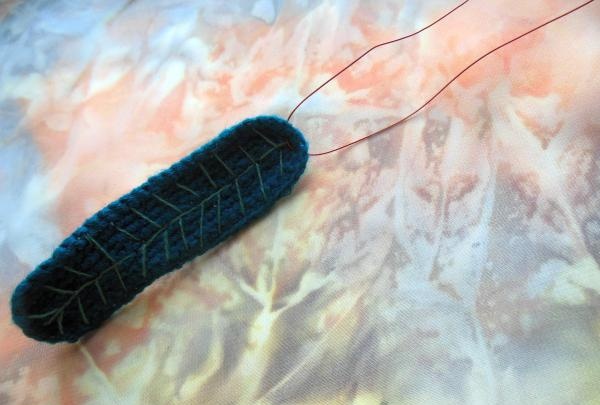
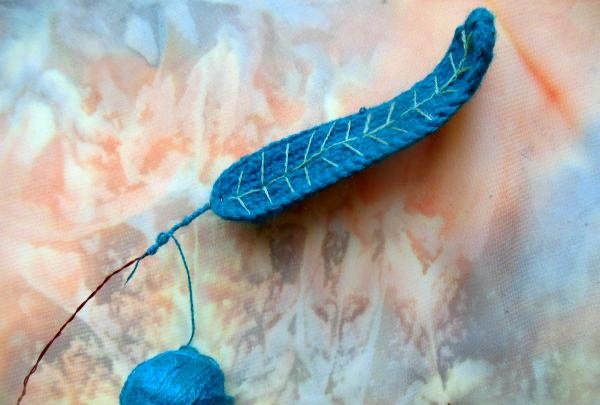
We fasten the flowers in the same way and combine them, and wrap the stem again with green thread.
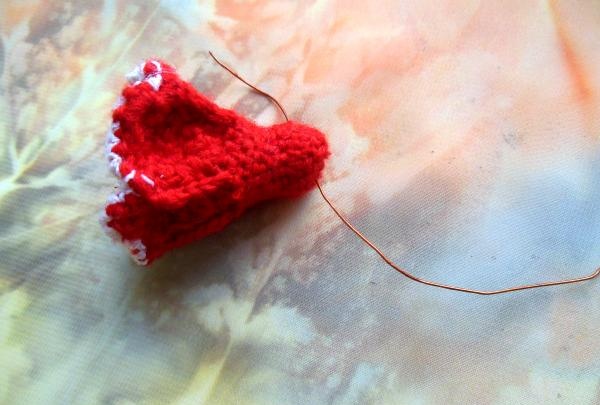
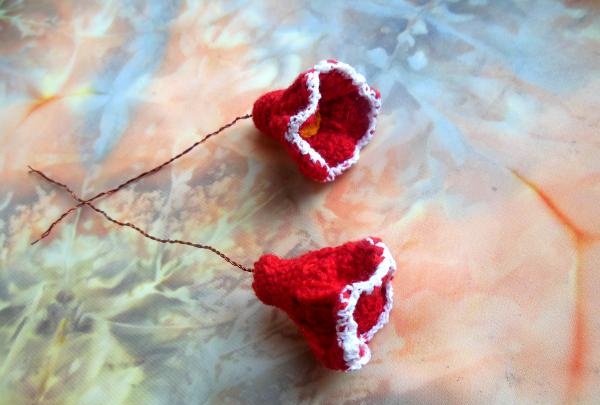

We immerse it first in a flower pot filled with liquid alabaster.

We let the leaves go in a circle, placing them as close to each other as possible.
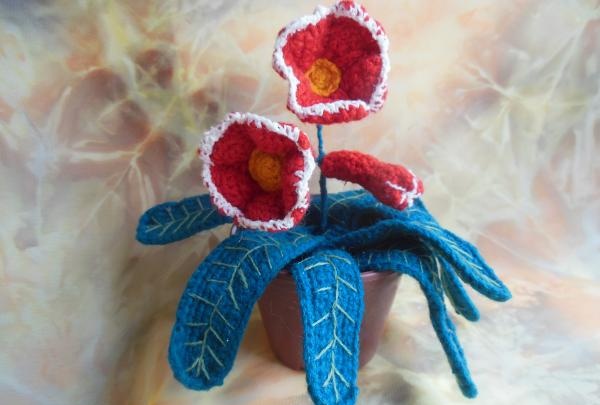
Now gloxinia will always bloom on your windowsill. There is no need to worry about watering, temperature conditions or other conditions for the development of the flower; you can only admire the excellent beauty of this plant and enjoy the picturesque view.
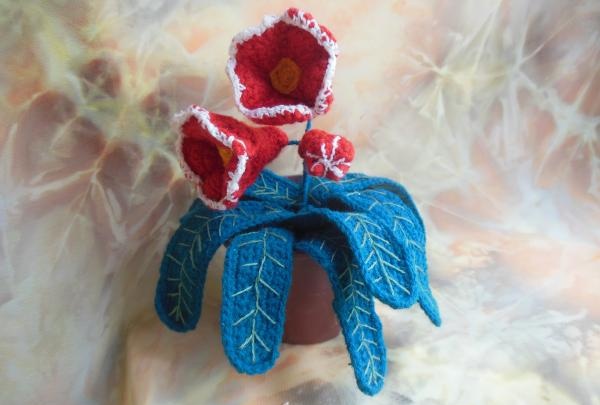
In fact, there is always a way out and its name is handicraft. It is no longer unusual for many to see artificial plants. Many families with children with allergies have discovered such a miracle as crocheted flowers in pots. And that's great! After all, such a plant can conquer even avid connoisseurs of wildlife!

To create such a flower you will need not only yarn and a hook, but also 2-3 hours of your time, diligence, desire, as well as knowledge of the basic principles of crocheting.
Shall we get started? To knit indoor gloxinia, we will prepare red and green yarn, plus some white and yellow threads for finishing, and also a 2.0 mm hook.

From the yarn intended for the flower (it can be not only red), we cast on 4 air loops (c) and knit 4 rows with a single crochet (dc).


In the 5th row along the edges we knit 2 stitches from one loop and knit 2 more rows of double stitches. n.

We knit the first 3 loops of the 8th row with 1 stitch, knit the next loop again without a crochet and complete the row with three stitches with 1 stitch.


Then we align the finished petal by tying its outline with a connecting post.

In total, you will need about 5-6 of these petals, which form the inflorescence we need.

And the yellow center will hold these petals. It consists of two round parts, knitted in double stitch. n circular knitting.


First, you need to sew the petals to one circle, and then strengthen them at the back with the same yellow blank.



Next, tie the outline of the petals with white thread, collecting the flower together.


Now we carefully sew up the side cuts and proceed to lengthening the receptacle.


To do this, we tie the outer yellow “seal” of the base in a circle around the st./b. n, gradually reducing their number.


You will get a long tube, which needs to be finished abruptly (close all the columns - 6-7 pieces - with one loop).


Creating a bud is even easier. You should cast on 8 loops, knit 9 rows of dc. n and in the next three rows constantly double the number of stitches (knit 2 from each loop).

Then sew this blank along the cut and gather it on top, and then apply a white finish.
The leaves of Gloxinia are smooth and narrow (without relief elements or teeth along the edges), which makes knitting quite easy. We dial 30 v. p and tie this chain on all sides with st./b. n.

The sides of the leaf should increase greatly (3-4 increases for each loop) so that its shape does not resemble a saucer.

After the leaf has acquired the desired width (2-3 cm), apply light green veins to its surface using a needle and thread.

For a small plant, 7-8 leaves are enough. There is only one inflorescence, but it includes several flowers and at least one bud.

The best material for the peduncle will be copper wire (it is advisable to choose a thick one).
You just need to put a leaf on it and twist both ends into a tight stem, and then “green” it.


We fasten the flowers in the same way and combine them, and wrap the stem again with green thread.



We immerse it first in a flower pot filled with liquid alabaster.

We let the leaves go in a circle, placing them as close to each other as possible.

Now gloxinia will always bloom on your windowsill. There is no need to worry about watering, temperature conditions or other conditions for the development of the flower; you can only admire the excellent beauty of this plant and enjoy the picturesque view.

Similar master classes
Particularly interesting
Comments (0)


